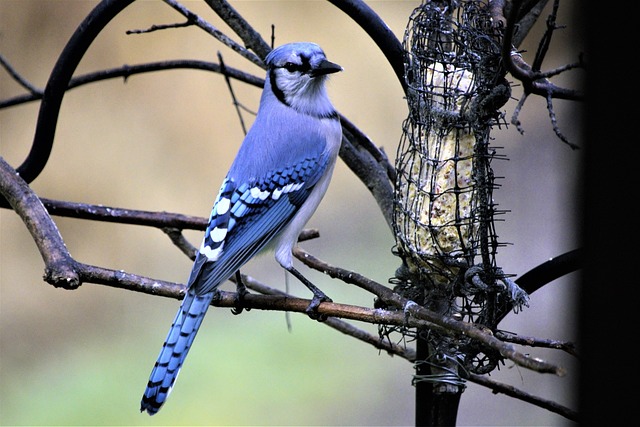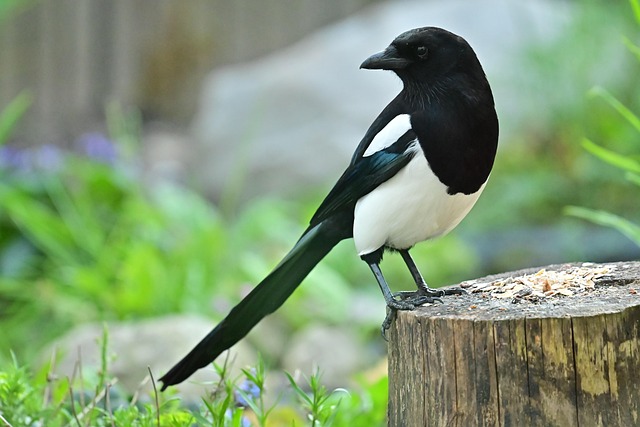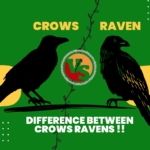Blue Jay Bird, also known as Cyanocitta Cristata, are one of North America’s most beautiful and intelligent bird species. They are famous for their bright blue feathers and distinctive voice. This makes them one of the favorite species of bird watchers and nature lovers. If you are fond of birds or interested in learning about these interesting creatures, then this blog is especially for you. In this blog, we will learn in detail about the life, age, height, weight, lifespan, sound, diet, food, and interesting facts related to the life of Blue Jays.
Know Everything About Blue Jay Bird (Cyanocitta cristata)

| Attribute | Details |
|---|---|
| Scientific Name | Cyanocitta cristata |
| Common Name | Blue Jay Bird |
| Family | Corvidae |
| Order | Passeriformes |
| Class | Aves |
| Conservation Status | Least Concern (IUCN) |
| Length | 22-30 cm |
| Wingspan | 34-43 cm |
| Weight | 70-100 grams |
| Lifespan in Wild | 7 years (average) |
| Lifespan in Captivity | Up to 26 years |
| Coloration | Blue, white, and black |
| Diet | Omnivorous (nuts, seeds, insects, etc.) |
| Habitat | Forests, woodlands, urban areas |
| Distribution | North America |
| Breeding Season | March to July |
| Clutch Size | 2-7 eggs |
| Nest Type | Cup-shaped |
| Nest Material | Twigs, grass, moss |
| Mating System | Monogamous |
| Migration | Partial migrant |
| Voice | Loud, harsh calls and whistles |
| Flight Pattern | Direct and strong |
| Predators | Hawks, owls, cats |
| Behavior | Social and curious |
| Intelligence | Highly intelligent |
| Symbolism | Communication, curiosity, protection |
| Fun Fact | Mimics the calls of hawks |
| Egg Incubation Period | 16-18 days |
| Fledgling Period | 17-21 days |
| Territorial? | Yes, especially during breeding season |
| Unique Traits | Crest feathers that rise when excited |
| Seasonal Activity | Active year-round |
| Vocal Mimicry | Can imitate other bird species |
| Feeding Technique | Foraging and caching |
| Favorite Foods | Acorns, peanuts, sunflower seeds |
| Eyesight | Excellent |
| Hearing | Acute, used for detecting predators |
| Courtship Behavior | Males feed females as part of courtship |
| Flocking Behavior | Travels in family groups |
| Defensive Tactics | Aggressive calls, mobbing predators |
| Migration Distance | Up to 1,000 km |
| Adaptability | Thrives in urban environments |
| Crest Function | Indicates mood (raised or lowered) |
| Population Trend | Stable |
| Cultural Significance | Featured in Native American folklore |
| Brain Size | Large relative to body size |
| Tool Use | Occasionally uses tools |
| Seasonal Plumage | No significant changes |
| Preferred Climate | Temperate |
| Molting Season | Late summer |
| Juvenile Appearance | Similar to adults but duller |
| Threat Display | Spreads wings and raises crest |
| Social Structure | Family-oriented |
| Nesting Location | Trees, 10-25 feet above ground |
| Egg Color | Bluish or greenish with brown spots |
| Parental Care | Both parents share responsibilities |
| Plumage Maintenance | Frequent preening |
| Energy Conservation | Roosts at night |
| Seasonal Diet Changes | Eats more insects in summer |
| Defensive Mimicry | Mimics hawk calls to deter threats |
| Preferred Trees | Oaks, pines, maples |
| Sibling Rivalry | Present during early nesting stages |
| Scientific Discovery Year | 1758 |
| Discoverer | Carl Linnaeus |
| Favorite Habitat Feature | Dense foliage |
| Egg Incubation Temperature | ~37°C |
| Annual Range | Northern U.S. to Southern Canada |
| Group Name | Band or party |
| Brain-to-Body Ratio | Comparable to primates |
| Nocturnal Activity | Minimal |
| Roosting Style | Communal |
| Breeding Interval | Once a year |
| Flight Speed | Up to 40 km/h |
| Predator Avoidance | Relies on camouflage and mobbing |
| Rain Adaptation | Uses sheltered perches |
| Winter Diet | Focuses on nuts and seeds |
| Native Range | Eastern and Central North America |
| Introduced Range | Rare outside native range |
| Mate Fidelity | High |
| Symbolic Meaning | Intelligence and resilience |
| Typical Perch Height | 5-20 feet |
| Migration Trigger | Food scarcity and temperature change |
| Longest Recorded Lifespan | 26 years |
| Average Nest Height | 10-20 feet |
| Feather Structure | Light-reflecting pigments |
| Molt Timing | Annual, post-breeding |
| Juvenile Diet | Primarily insects |
| Daily Energy Use | High metabolism |
| Parasites | Lice, mites, and ticks |
| Interspecies Interaction | Competes with other songbirds |
| Favorite Shrubs | Dogwoods, viburnums |
| Acorn Storage Sites | Soil, tree crevices |
| Learning Ability | Exceptional |
| Migration Challenges | Predation, weather, and habitat loss |
| Climate Change Impact | Affects migration and food supply |
| Nest Predators | Squirrels, raccoons, snakes |
| Tree Nest Preference | Deciduous trees |
| Winter Behavior | Forms mixed-species flocks |
| Eggshell Composition | Calcium carbonate |
| Juvenile Mortality Rate | High due to predation |
| Vocal Communication | Complex and varied |
| Memory Skills | Excellent |
Note: Know Everythings About Canadian Geese (Branta canadensis)
Fascinating Facts About Blue Jays
- Feather Illusion: Blue Jays appear blue not because of pigment but because of the microscopic structure of their feathers, which refracts light to display the blue color.
- Food Hoarders: They have an incredible memory and can store hundreds of acorns to eat during winter.
- Mimicry Skills: Blue Jays can mimic hawk calls, possibly to scare other birds away from food sources.
- Intelligence: They belong to the Corvid family, which is famous for its intelligence and problem-solving abilities.
- Family Bonds: Both male and female Blue Jays raise their young.
- Bold and Brave: Blue Jays are known to chase away bigger birds, like hawks and owls, to protect their nests.
- Symbol of Loyalty: In some cultures, Blue Jays symbolize faithfulness and protection.
- Acorn Planters: Their habit of burying acorns has assisted in the development of oak forests.
- Vocal Range: They have a wide vocal range, from musical notes to mechanical sounds, and they produce a wide range of calls.
- Urban Survivors: Blue Jays are very adaptable and can live anywhere, whether in cities, suburbs, or in rural areas.
FAQ
Blue jays make a wide variety of calls. Their primary call is very loud and shrieking, as it sounds like “jay-jay.” Other than that, they can whistle musical tones, clicks, or even imitate hawks’ calls. Vocalizations are mostly sharp and screaming in nature and, therefore, quite recognizable.
Blue Jays are mostly found in North America, specifically in the eastern and central United States and southern Canada. They prefer a wide range of habitats such as deciduous and mixed forests, parks, suburban gardens, and urban areas. They are very adaptable and can easily be spotted near oak trees since they love acorns.
Yes, Blue Jays are known to mate for life. They are monogamous and have strong pair bonds with their mates. Once paired, they tend to stay together for the breeding seasons, working as a team to build nests, incubate eggs, and care for their young. However, if one mate dies, the surviving Blue Jay may find a new mate.
The blue jay nests in trees or large shrubs, typically at a height of 10 to 25 feet above the ground. They like to nest in the crotch or thick branches of trees for extra support and protection. The nests are cup-shaped and constructed using twigs, grass, moss, bark, and sometimes mud, with a softer lining of feathers or rootlets to keep the eggs safe and warm. Common trees that they nest in include oak, pine, and beech trees.
Blue jays are omnivorous, consuming seeds, nuts, fruits, insects, and small vertebrates. They love acorns and are renowned for caching food. They visit bird feeders for sunflower seeds, peanuts, and suet.
Conclusion
Truly, the Blue Jay is one of the marvels in the avian world. With its appearance, clever behavior, and unique ecological role, it’s worth appreciating the bird. Spotting one in your yard or catching a glimpse of a familiar “jay-jay” call in the woods, you’ll be sure to capture their attention and curiosity. In order to understand and protect these vibrant birds, we ensure that they keep gracing our landscapes for many generations to come.









